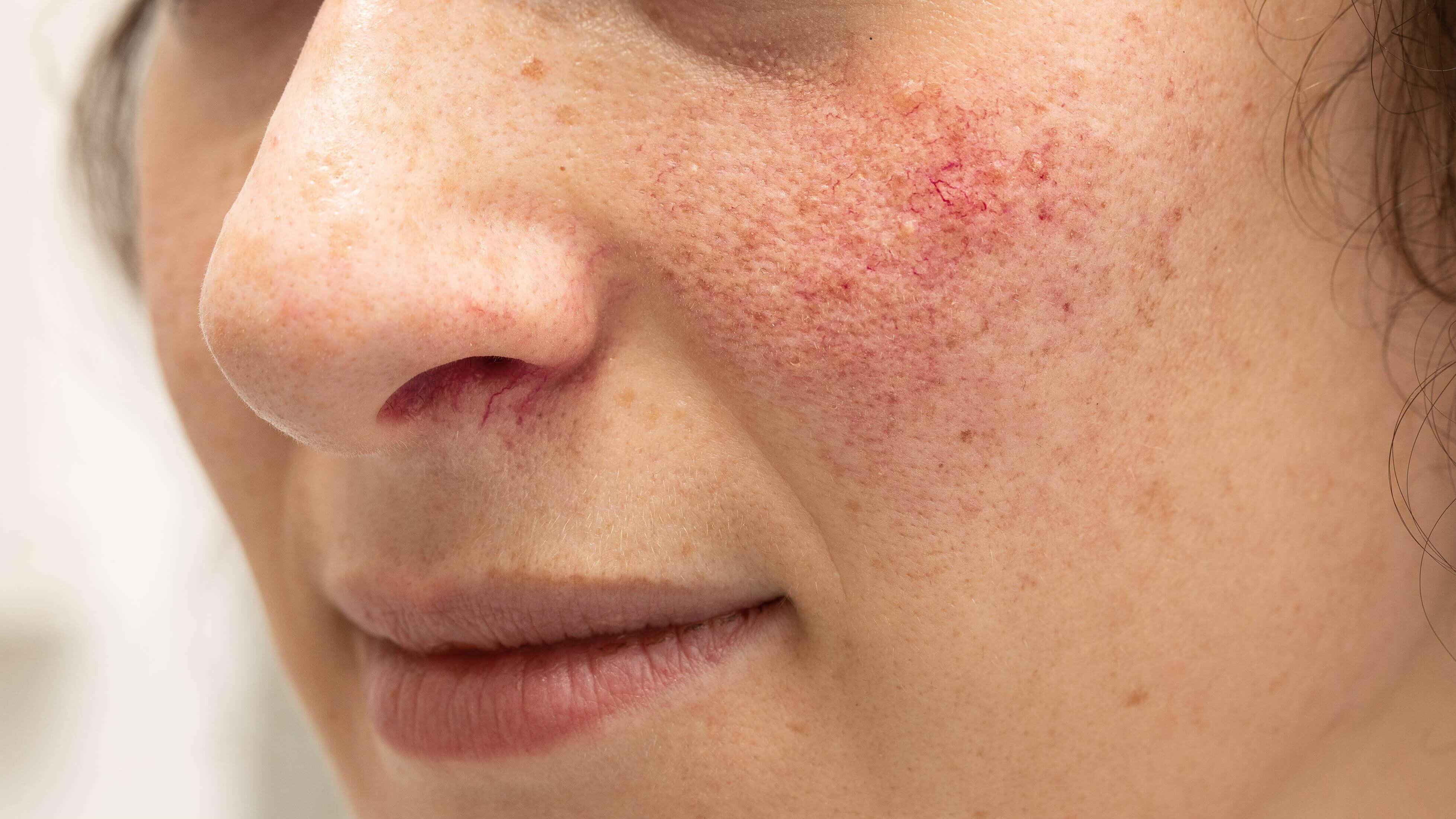Rosacea
&srotate=0)
What is Rosacea?
Rosacea is a relatively common inflammatory condition often affecting the central face and nose. It is sometimes incorrectly referred to as “adult acne” because of the possibility of developing pimples, nodules, and cysts, but the conditions are separate and unrelated. Rosacea is chronic and can improve and worsen at various times. It is also characterized by periodic flares that can occur at any time or with certain triggers.
Types of Rosacea
There are 4 major types of rosacea:
- Erythematotelangiectatic
- Papulopustular
- Phymatous
- Ocular
The erythematotelangiectatic type is characterized by fixed redness and dilated blood vessels across the central face. The papulopustular type can be confused with acne since the pustules and other inflammatory “bumps” can look similar. Rosacea lacks the black heads and white heads of acne (but people can have both conditions in combination). Phymatous rosacea refers to the thickening of skin tissues most commonly on the nose (rhinophyma) but also potentially involving the chin, forehead, and cheeks. Finally, rosacea can affect the eyes causing dryness, redness, and irritation.
Who Gets Rosacea?
The short answer is almost anyone can get rosacea. It commonly affects people with lighter skin of Celtic and Northern European descent, women more than men, and adults over 30. That said, people of all skin types and color can have rosacea in its various forms, but the redness can be more difficult to see in darker skin tones.
What Causes Rosacea?
The exact cause or causes of rosacea are still unknown, but it is most likely a combination of various factors including the body’s immune system, some other internal biochemical factors, genetics, environmental factors, and microorganisms. Many theories have been suggested and some weak associations have been reported, but many suspected causes have no confirmed link.
For example, Demodex mites that can be found living in the hair follicles on the face on most adults have been implicated as a potential cause or exacerbating factor in rosacea. However, their role in rosacea has not been definitively established.
How Can I Treat Rosacea?
Rosacea has various treatments available to combat the different types and components of rosacea, so a “one-size-fits-all” approach does not typically work. One of the most important components of a rosacea treatment plan is the identification and avoidance of things that can trigger flares. It is important to understand that rosacea treatment is more about management than a permanent cure. Flushing is one of the most difficult components of rosacea to treat, but there are some options. Partner with Fort Lauderdale Dermatology where you will receive a thorough evaluation and customized treatment plan.
Five Tips for Managing Rosacea
- Aggressively practice sun avoidance and protection.
- Identify and avoid triggers of your rosacea flares.
- Use a gentle daily skincare routine. Avoid drying and irritating products.
- Consider a cover-up makeup for redness.
- Partner with a board-certified dermatologist like Dr. Wilkerson at Fort Lauderdale Dermatology to maximize your treatment.